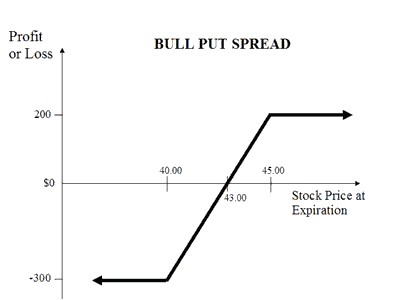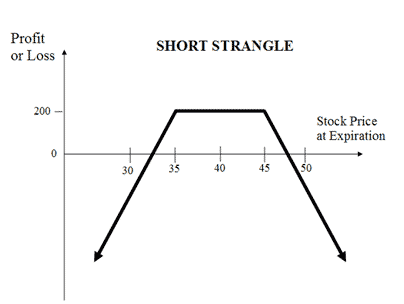 Zerodha (Trading Account)
Zerodha (Trading Account)
FREE Equity Delivery and MF
Flat ₹20/trade Intra-day/F&O
 Zerodha (Trading Account)
Zerodha (Trading Account)
FREE Equity Delivery and MF
Flat ₹20/trade Intra-day/F&O

|
|
Compare Bull Put Spread and Short Strangle (Sell Strangle) options trading strategies. Find similarities and differences between Bull Put Spread and Short Strangle (Sell Strangle) strategies. Find the best options trading strategy for your trading needs.
| Bull Put Spread | Short Strangle (Sell Strangle) | |
|---|---|---|
 |
 |
|
| About Strategy | A Bull Put Spread (or Bull Put Credit Spread) strategy is a Bullish strategy to be used when you're expecting the price of the underlying instrument to mildly rise or be less volatile. The strategy involves buying a Put Option and selling a Put Option at different strike prices. The risk and reward for this strategy is limited. A Bull Put Strategy involves Buy OTM Put Option and Sell ITM Put Option. For example, If you are of the view that the price of Reliance Shares will moderately gain or drop its volatility in near future. If Reliance is currently trading at Rs 600 then you will buy an OTM Put Option at Rs 700 and a sell an ITM Put Option at Rs 550. You will make a profit when, at expiry, Reliance closes at Rs 700 level and incur losse... Read More | The Short Strangle (or Sell Strangle) is a neutral strategy wherein a Slightly OTM Call and a Slightly OTM Put Options are sold simultaneously of same underlying asset and expiry date. This strategy can be used when the trader expects that the underlying stock will experience a very little volatility in the near term. It is a limited profit and unlimited risk strategy. The maximum profit earn is the net premium received. The maximum loss is achieved when the underlying moves either significantly upwards or downwards at expiration. A net credit is taken to enter into this strategy. For this reason, the Short Strangles are Credit Spreads. The usual Short Strangle Strategy looks like as below for NIFTY current index value at 10400 (NIFTY S... Read More |
| Market View | Bullish | Neutral |
| Strategy Level | Advance | Advance |
| Options Type | Put | Call + Put |
| Number of Positions | 2 | 2 |
| Risk Profile | Limited | Unlimited |
| Reward Profile | Limited | Limited |
| Breakeven Point | Strike price of short put - net premium paid | two break-even points |
| Bull Put Spread | Short Strangle (Sell Strangle) | |
|---|---|---|
| When to use? | This strategy works well when you're of the view that the price of a particular underlying will rise, move sideways, or marginally fall. |
The Short Strangle is perfect in a neutral market scenario when the underlying is expected to be less volatile. |
| Market View | Bullish When you are expecting a moderate rise in the price of the underlying or less volatility. |
Neutral When you are expecting little volatility and movement in the price of the underlying. |
| Action |
A Bull Put Strategy involves Buy OTM Put Option + Sell ITM Put Option. For example, If you are of the view that the price of Reliance Shares will moderately gain or drop its volatility in near future. If Reliance is currently trading at 600 then you will buy a OTM PUT OPTION at 700 and a sell a ITM PUT OPTION at 550. You will make a profit when at expiry Reliance closes at 700 level and incur losses if the prices fall down below the current price. |
Sell 1 out-of-the-money put and sell 1 out-of-the-money call which belongs to same underlying asset and has the same expiry date. |
| Breakeven Point | Strike price of short put - net premium paid |
two break-even points A strangle has two break-even points. Lower Break-even = Strike Price of Put - Net Premium Upper Break-even = Strike Price of Call+ Net Premium" |
| Bull Put Spread | Short Strangle (Sell Strangle) | |
|---|---|---|
| Risks | Limited Maximum loss occurs when the stock price moves below the lower strike price on expiration date. Max Loss = (Strike Price Put 1 - Strike Price of Put 2) - Net Premium Received Max Loss Occurs When Price of Underlying <= Strike Price of Long Put |
Unlimited The maximum loss is unlimited in this strategy. You will incur losses when the price of the underlying moves significantly either upwards or downwards at expiration. Loss = Price of Underlying - Strike Price of Short Call - Net Premium Received Or Loss = Strike Price of Short Put - Price of Underlying - Net Premium Received |
| Rewards | Limited Maximum profit happens when the price of the underlying moves above the strike price of Short Put on expiration date. Max Profit = Net Premium Received |
Limited For maximum profit, the price of the underlying on expiration date must trade between the strike prices of the options. The maximum profit is limited to the net premium received while selling the Options. Maximum Profit = Net Premium Received |
| Maximum Profit Scenario | Both options unexercised |
Both Option not exercised |
| Maximum Loss Scenario | Both options exercised |
One Option exercised |
| Bull Put Spread | Short Strangle (Sell Strangle) | |
|---|---|---|
| Advantages | Allows you to benefit from time decay in profit situations. Helps you profit from 3 scenarios: rise, sideway movements and marginal fall of the underlying. |
The strategy offers higher chance of profitability in comparison to Short Straddle due to selling of OTM Options. |
| Disadvantage | Limited profit. Time decay may go against you in loss situations. |
Limited reward with high risk exposure. |
| Simillar Strategies | Bull Call Spread, Bear Put Spread, Collar | Short Straddle, Long Strangle |

Add a public comment...

FREE Intraday Trading (Eq, F&O)
Flat ₹20 Per Trade in F&O
|
|